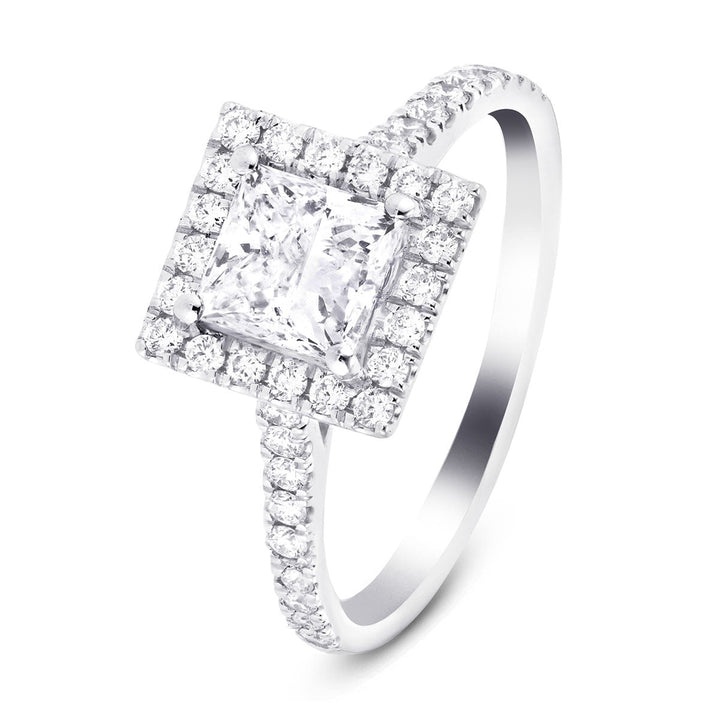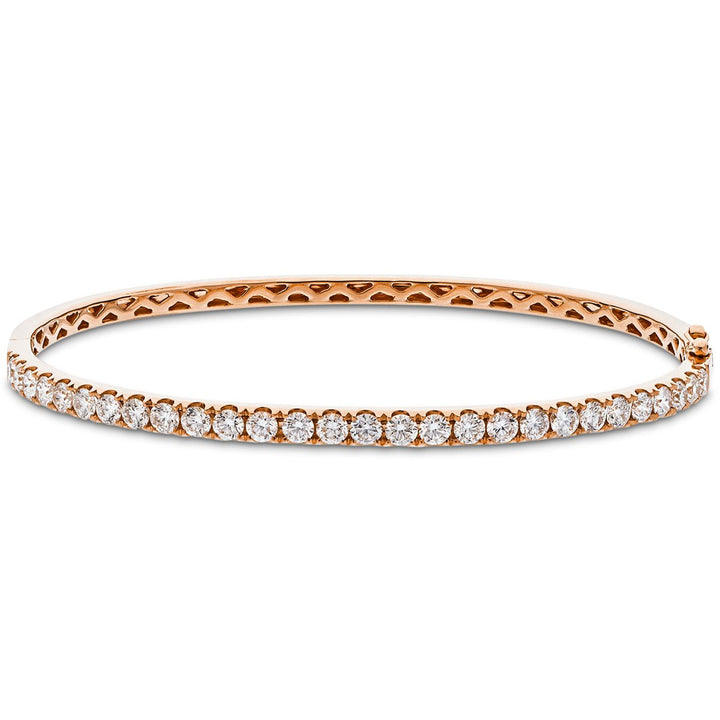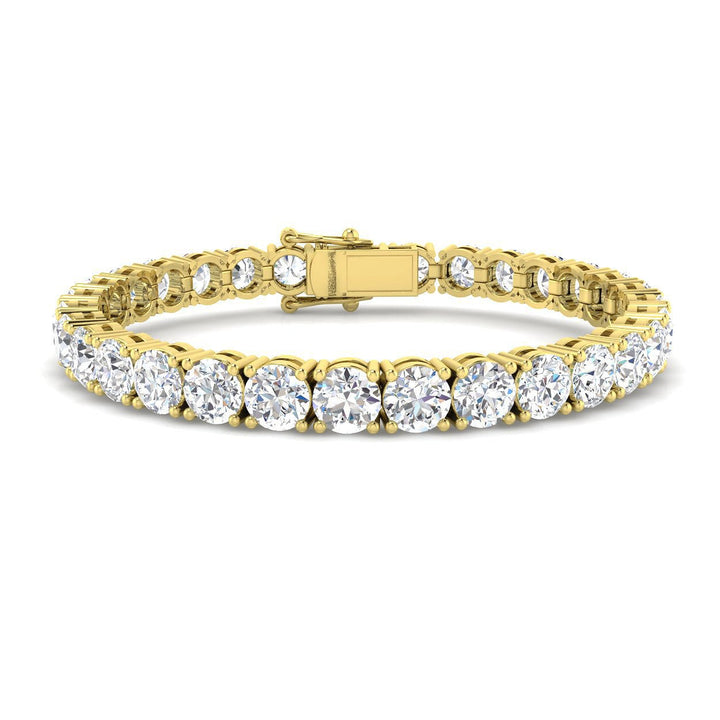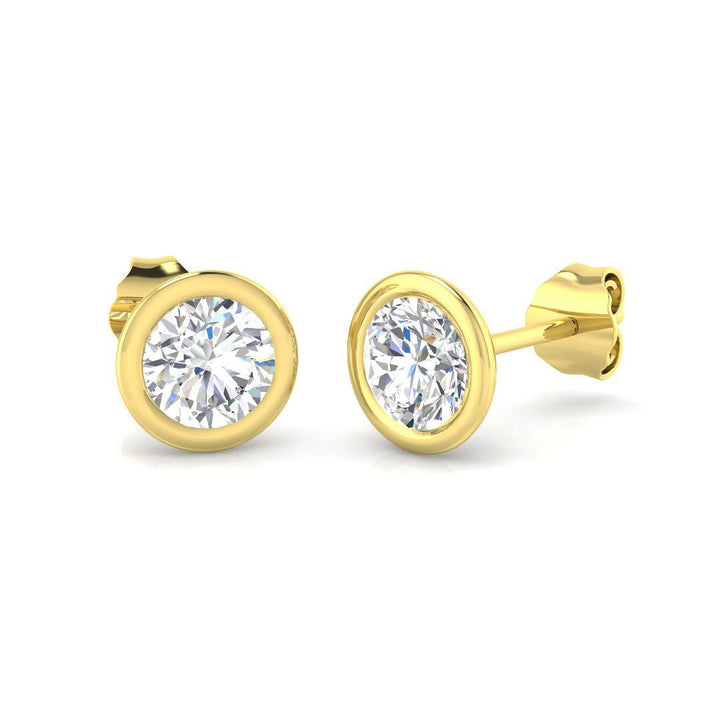In This Article
- Main Highlights of This Article
- Lab-Grown Diamond Market Expansion
- Custom Design Revolution
- Sustainable Jewellery Practices
- Digital Marketing Transformation
- Global Market Growth Patterns
- Embracing the Future of Diamond Jewellery
- Frequently Asked Questions About the Future of Diamond Jewellery
- How Long Does It Take to Create a Lab-Grown Diamond?
- What Factors Determine the Resale Value of Diamond Jewellery?
- Can Inherited Diamond Jewellery be Resized or Reset Without Damage?
- Why Do Some Diamonds Appear More Colourful Under Different Lighting Conditions?
- How Often Should Diamond Jewellery Be Professionally Cleaned and Inspected?
Evolving consumer preferences and technological innovations are driving a dramatic transformation in the diamond jewellery market. Lab-grown diamonds, currently commanding 10% of the market share, are projected to reach £45 billion by 2032, reflecting growing demand for sustainable luxury. Custom design capabilities through CAD software and 3D printing have revolutionised personalisation, while ethical sourcing and eco-friendly practices reshape industry standards. Digital marketing strategies and omnichannel experiences are enhancing customer engagement, particularly in North America, which dominates global jewellery demand. The future of diamond jewellery will exist in a world where a convergence of these trends occurs—a future where innovation meets tradition in unprecedented ways.
Layla Lab Diamond Halo Princess Engagement Ring 3.75ct D/VVS in Platinum

£5,450.00
£10,406.00
Make a statement of elegance and sophistication with this Layla Lab Diamond Halo Princess Engagement Ring, designed to take your breath away. Expertly crafted in the UK, this ring features a breathtaking D/VVS certified 3.00 carat lab-created diamond at the… read more
Main Highlights of This Article
- Lab-grown diamonds are rapidly gaining market share, projected to reach £45 billion by 2032, driven by sustainability and ethical appeal.
- Digital transformation and virtual platforms are revolutionising custom jewellery design, enabling personalised experiences through CAD software and 3D printing.
- Sustainable practices dominate future trends, with an increased focus on recycled metals, eco-friendly materials, and transparent sourcing protocols.
- Consumer preference is shifting towards affordable luxury and personalisation, influencing brands to offer customisable designs with meaningful elements.
- Technology integration through blockchain and virtual reality enhances authenticity tracking and improves customer design visualisation experiences.
Lab Diamond Claw Set Bangle 4.00ct D/VVS in 18k Rose Gold

£4,500.00
£10,005.00
Unveil the epitome of elegance with this Lab Diamond Claw Set Bangle, boasting a stylish and modern design. Set in luxurious 18k rose gold, this masterpiece features 4.00ct of real diamonds, each meticulously placed in a claw setting to enhance… read more
Lab-Grown Diamond Market Expansion
As market accessibility continues to improve, the Asia Pacific region has emerged as a dominant force, capturing over 44.1% of the global market share. This leadership position stems from sophisticated production capabilities and strategic consumer education initiatives, particularly in manufacturing powerhouses like India and China. Market demand has shown incredible momentum, with adoption rates jumping from 3.5% in 2018 to 18.5% in 2023. The ethical sourcing of lab-grown diamonds aligns with consumer values seeking genuine diamonds without ethical implications.
The latter's production capacity has reached an impressive 6 million carats annually, demonstrating the industry's robust scaling potential. The Chemical Vapour Deposition method now accounts for over 57.4% of all lab-grown diamond production, establishing itself as the industry standard. Contemporary consumers, increasingly drawn to sustainable luxury, are embracing these alternative gems for their ethical production methods and competitive pricing.
This shift in preferences, coupled with improved production techniques and growing retail adoption, suggests that lab-grown diamonds are not merely a trend but a transformative force in the fine jewellery landscape.
18ct Lab Diamond Tennis Bracelet D/VVS Quality Set in 18k Yellow Gold

£6,995.00
£15,995.00
Experience ultimate luxury with this exquisite Lab Diamond Tennis Bracelet, intricately set in 18k Yellow Gold. The total of 18 carats of round lab-grown diamonds of D/VVS quality, each measuring approximately 5.4mm in diameter, offers an impressive display of brilliance… read more
Custom Design Revolution
Increasingly, technological advancements in jewellery design have revolutionised how consumers approach diamond jewellery creation, marking a significant shift from traditional retail models to personalised experiences. The integration of CAD software and 3D printing has empowered artisans to craft intricate, personalised designs with unprecedented precision, while virtual reality platforms enable clients to visualise their dream pieces before production begins. The availability of lab-grown diamonds has further democratised custom jewellery design by making personalised pieces more affordable. Blockchain technology ensures authenticity and tracks the origin of each diamond throughout the design process.
A new era of custom innovative technology that combines traditional craftsmanship with modern capabilities has made custom design techniques even better. These techniques allow for more complex details, and online customization tools let customers be creative. The use of sustainable and ethical lab-grown diamonds aligns with modern values, offering a guilt-free and environmentally friendly option for bespoke jewellery.
The movement towards personalisation extends beyond mere aesthetics, incorporating meaningful elements such as birthstones, zodiac symbols, and custom engravings that tell individual stories.
The custom design revolution has particularly resonated with those seeking to express their uniqueness through jewellery. Whether through minimalist solitaires or elaborate vintage-inspired settings, today's consumers can collaborate with designers to create pieces that perfectly reflect their personal style while maintaining the timeless elegance of diamond jewellery.
Sustainable Jewellery Practices
Today's sustainable jewellery movement emphasises recycled precious metals, lab-grown diamonds, and creative alternatives that minimise environmental impact. Prestigious brands see the future of diamond jewellery and are implementing rigorous sourcing protocols, ensuring their materials meet strict ethical standards while maintaining the luxurious quality their clientele expects.
The integration of cutting-edge technology, such as 3D printing and blockchain tracking, further improves transparency throughout the supply chain.
The future of sustainable jewellery looks particularly promising, with artisanal collaborations and circular business models gaining prominence. Forward-thinking designers are exploring biodegradable materials and upcycled elements, creating pieces that resonate with environmentally conscious collectors.
This shift towards sustainability isn't merely a trend; it represents a fundamental reimagining of luxury jewellery, where environmental responsibility and ethical practices become as valuable as the gems themselves.
Lab Diamond Solitaire Bezel Necklace Pendant 4.00ct D/VVS in 18k Yellow Gold

£9,385.00
£17,906.00
Make a statement with this Lab Diamond Solitaire Bezel Necklace Pendant, featuring a stunning 4.00ct D/VVS round lab-grown diamond set in a luxurious 18k yellow gold bezel setting. The IGI-certified diamond is a true marvel, captivating the eye with its… read more
Digital Marketing Transformation
Digital transformation has revolutionised how diamond jewellery brands connect with their audiences, building upon sustainable practices through creative marketing approaches. The integration of sophisticated digital tools and platforms has redefined the landscape, with jewellers embracing omnichannel strategies to improve customer experiences and drive engagement.
At the forefront of this evolution are SEO strategies, which have become instrumental in elevating brand visibility and attracting discerning clientele. Social media engagement, particularly on visually rich platforms like Instagram and Pinterest, enables jewellery houses to showcase their exquisite collections while fostering meaningful connections with their audience. The implementation of high-quality content marketing through blogs and articles has established many brands as authoritative voices in the industry. With 80% of jewellery buyers researching online before making a purchase, digital presence has become crucial for brand success.
The implementation of AI-driven solutions, from personalised shopping experiences to 24/7 customer service via chatbots, demonstrates the industry's commitment to innovation.
The statistics speak volumes: with over 50% of retail jewellers experiencing increased online traffic and 23% conducting direct website sales, the digital sphere has become indispensable.
Modern jewellery brands are leveraging sophisticated CRM platforms and experience management systems to create seamless, personalised experiences that reflect the prestige and artistry of their collections while meeting the expectations of today's digitally savvy consumers.
Global Market Growth Patterns
Market segmentation reveals fascinating dynamics across different regions, with the Asia Pacific market emerging as a significant growth frontier, particularly in the lab-grown diamond sector. Consumer preferences are increasingly gravitating toward sustainable and ethically sourced options, reflecting a broader shift in market consciousness. The 4.7% annual growth projected through 2030 underscores the sector's robust expansion potential.
This transformation is evident in the 43% surge in lab-grown diamond unit sales and their capture of a 10% market share by mid-2024.
Despite challenges in the natural diamond segment, which experienced a 2.8% decline in finished jewellery sales, the industry continues to adapt through sophisticated inventory management and strategic pricing approaches.
The market's evolution is further characterised by regional expansions and the emergence of new consumer segments, particularly among the growing middle class, setting the stage for continued growth through 2031.
Lab Diamond Solitaire Stud Bezel Set Earrings 8.00ct D/VVS 18k Yellow Gold

£3,495.00
£35,396.00
Indulge in luxury with our Lab Diamond Solitaire Stud Bezel Set Earrings, crafted with the finest 18k yellow gold and a stunning 8.00 carats total weight of D/VVS-graded lab-grown diamonds. These earrings feature a solitaire diamond in a bezel setting,… read more
Embracing the Future of Diamond Jewellery
The diamond jewellery landscape is undergoing a remarkable transformation, with lab-grown diamonds at the forefront of this evolution. These ethically produced gems offer unparalleled quality and affordability, making luxury accessible without compromising on values.
At After Diamonds, we take pride in our British-designed and manufactured jewellery, each piece accompanied by a lifetime workmanship guarantee.
We invite you to explore our exquisite collection and experience the brilliance of lab-grown diamonds firsthand.
Visit our online store today to find the perfect piece that resonates with your style and conscience.
Frequently Asked Questions About the Future of Diamond Jewellery
How Long Does It Take to Create a Lab-Grown Diamond?
Time flies when creating diamonds in the lab! Modern lab-grown processes can produce diamonds in as little as 2-3 days for smaller stones, extending to 19 days for larger specimens.
What Factors Determine the Resale Value of Diamond Jewellery?
The resale market values diamonds based on the 4Cs diamond grading criteria, brand prestige, certification from respected laboratories, market demand, and the general condition of the piece.
Can Inherited Diamond Jewellery be Resized or Reset Without Damage?
Experienced jewellers can safely modify inherited diamond jewellery using modern resizing techniques and resetting options, preserving both sentimental value and structural integrity, much like delicate surgery.
Why Do Some Diamonds Appear More Colourful Under Different Lighting Conditions?
Different lighting conditions affect colour perception in diamonds through wavelength interactions. Natural daylight provides an accurate colour display, while artificial lighting can enhance or alter perceived lighting effects.
How Often Should Diamond Jewellery Be Professionally Cleaned and Inspected?
You should treat your cherished diamond jewellery with royal care! Professional cleaning should occur every six months, with inspections to guarantee that settings remain secure and stones maintain their breathtaking brilliance within our prized collections.




